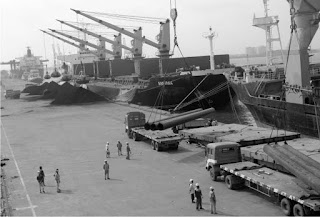The history of the Panama Canal goes back almost to the
earliest explorers of the Americas. The narrow land bridge between North and
South America houses the Panama Canal, a water passage between the Atlantic and
Pacific Oceans. The earliest European colonists of Central America recognized
this potential, and schemes for such a canal were floated several times in the
subsequent years
By the late nineteenth century, technological advances
and commercial pressure advanced to the point where construction started in
earnest. An initial attempt by France to build a sea-level canal failed, but
only after a great amount of excavation was carried out. This was of use to the
United States, which completed the present Panama Canal in 1913 and officially
opened it in 1914. Along the way, the state of Panama was created through its
separation from Colombia in 1903, due to a US backed revolt, so the US could
then get control of the Canal project area.
Today, the canal continues to be not only a viable
commercial venture, but also a vital link in world shipping.
Philippe-Jean Bunaua-Varilla changed people's opinion on
the location to build a canal. The United States wished to build a canal in
Nicaragua, however Philippe-Jean convinced them to build it in Panama. He had
been involved in building canals in France. Towards the end of the 1890s
Bunaua-Varilla convinced the American lawmakers to buy the rights to build the
French canal in Panama because Nicaragua was unsafe due to dangerous Volcanoes.
He then sent Nicaragua postage stamps with a smoking volcano on them to each
senator to persuade their vote. Although, in 1903 Colombia (which Panama was a
part of) refused to agree to allow the United States to build the canal. The
people of Panama, with help from Philippe-Jean Bunaua-Varilla, overthrew
Colombia and ruled Panama as independent which made the production of the canal
possible.







